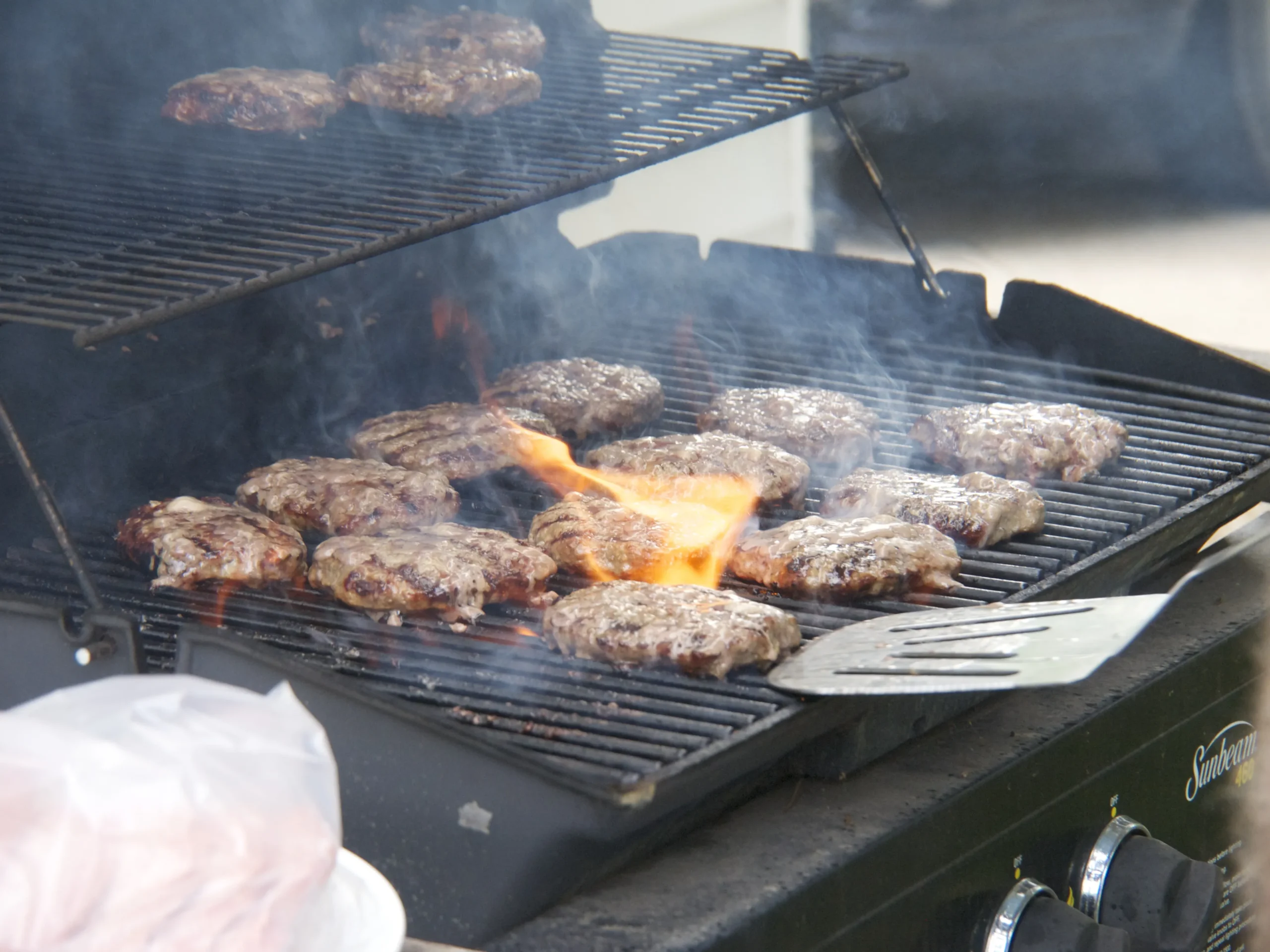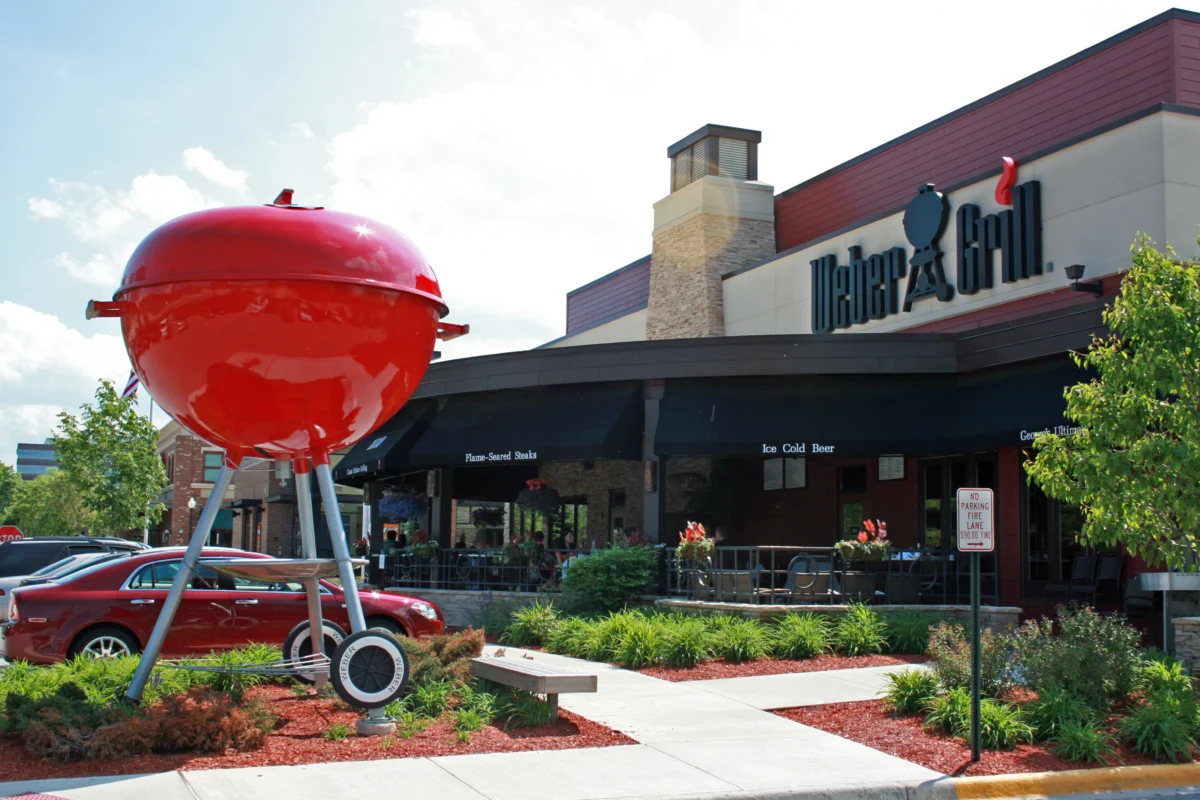
Grilling hamburgers is a delicious and classic way to enjoy a summer cookout. But have you ever wondered what the best temperature is to cook your burgers to perfection? In this article, we’ll explore the ideal temperature for grilling hamburgers, ensuring that they are juicy, flavorful, and cooked to your liking. Whether you prefer a medium-rare patty or a well-done burger, understanding the right temperature is key to achieving that mouthwatering result.
Getting the temperature right is crucial for grilling hamburgers that are both safe to eat and incredibly tasty. Cooking at too low a temperature can result in undercooked burgers, while cooking at too high a temperature can lead to dry and overcooked patties. So, what is the sweet spot? We’ll dive into the science behind grilling temperatures and explore the range of options to help you find the perfect balance for your next backyard barbecue. With a little knowledge and some practice, you’ll be able to grill hamburgers like a pro and impress your friends and family with your culinary skills.
Factors to Consider When Grilling Hamburgers
As a grill master, it’s important to understand the factors that can affect the outcome of your grilled hamburgers. By considering these factors, you’ll be able to elevate your grilling game and achieve the perfect burger every time. Here are a few key factors to keep in mind:
1. Meat Thickness
The thickness of your burger patties plays a crucial role in determining the ideal grilling temperature. Thicker patties require lower temperatures to ensure they are cooked all the way through without burning the exterior. On the other hand, thinner patties can be cooked at higher temperatures for a shorter amount of time.
2. Desired Level of Doneness
Different people have different preferences when it comes to how they like their burgers cooked. Whether you prefer a rare, medium-rare, medium, or well-done burger, the grilling temperature will vary. It’s important to use a meat thermometer to accurately gauge the internal temperature of the burgers and achieve the desired level of doneness.
3. Grill Type
The type of grill you’re using can also affect the temperature at which you should grill your hamburgers. Gas grills and charcoal grills have different heat distribution properties, so it’s important to adjust your cooking temperature accordingly. Gas grills tend to heat up faster and provide more consistent heat, while charcoal grills require a bit more finesse to maintain the desired temperature.
4. Outdoor Conditions
Lastly, outdoor conditions such as weather and wind can impact the grilling temperature. Windy conditions can cause the grill to lose heat faster, while hot weather can make it more difficult to maintain a consistent temperature. It’s important to monitor the grill closely and make adjustments as needed to compensate for these external factors.
The Importance of Temperature for Grilling Hamburgers
As a grill master, you know that achieving the perfect burger requires more than just tossing patties on the grill and hoping for the best. One of the most crucial factors to consider is the temperature at which you grill your hamburgers. Getting the temperature right can make the difference between juicy, flavorful burgers and dry, overcooked ones. Let’s dive into why temperature is so important when grilling hamburgers.
1. Proper Cooking: Cooking hamburgers at the right temperature ensures that they are safe to eat. The heat from the grill kills any harmful bacteria present in the meat, reducing the risk of foodborne illnesses. It’s important to reach an internal temperature of 160°F (71°C) for ground beef to be fully cooked.
2. Juicy and Flavorful Results: Grilling hamburgers at the optimal temperature allows them to cook evenly, retaining their moisture and natural juices. If the temperature is too high, the burgers may become dry and tough. On the other hand, if the temperature is too low, the burgers may take longer to cook, resulting in a loss of flavor.
3. Achieving the Desired Level of Doneness: The temperature at which you grill your hamburgers also determines their level of doneness. For a medium-rare burger, aim for an internal temperature of 135°F (57°C). If you prefer a medium burger, aim for 145°F (63°C). Adjust the cooking time accordingly based on your desired level of doneness.
4. Avoiding Flare-ups and Charring: Grilling hamburgers at the right temperature helps prevent flare-ups and excessive charring. High temperatures can cause fat to drip onto the flames, resulting in flare-ups that can char the exterior of the burgers. By maintaining a moderate temperature, you can reduce the risk of burning and ensure a more evenly cooked burger.
Recommended Temperatures for Grilling Hamburgers
As a grill master, you know that achieving the perfect temperature is the key to grilling mouthwatering hamburgers. When it comes to cooking burgers, it’s important to strike a balance between food safety and creating a juicy, flavorful patty. Let’s dive into the recommended temperatures for grilling hamburgers and how they can help you become a backyard barbecue expert.
Internal Temperature
To ensure that your hamburgers are safe to eat, they must reach a minimum internal temperature. The United States Department of Agriculture (USDA) recommends cooking ground beef, such as hamburger patties, to an internal temperature of 160°F (71°C). This temperature kills any harmful bacteria that may be present in the meat, ensuring that your burgers are safe for consumption.
Doneness Level
While food safety is crucial, achieving the desired doneness level is equally important for a flavorful burger. The internal temperature can vary depending on how you like your burgers cooked. Here are some general guidelines for achieving different levels of doneness:
- Medium-Rare: Cook the burger to an internal temperature of 145°F (63°C). The center will be pink, juicy, and slightly warm.
- Medium: Aim for an internal temperature of 160°F (71°C) for a medium burger. It will have a slightly pink center and be juicy and tender.
- Well-Done: For those who prefer their burgers well-done, cook them to an internal temperature of 170°F (77°C). The center will be brown and fully cooked through.
Tips for Grilling Hamburgers

« Enhance Your Outdoor Cooking with Delicious Grilling Sauces and Marinades
10 Expert Tips for Perfectly Grilling or Frying Juicy Steaks »
Now that you know the recommended temperatures for grilling hamburgers, here are a few tips to help you achieve burger perfection:
- Preheat your grill to medium-high heat before placing the patties on the grates.
- Use a meat thermometer to accurately measure the internal temperature of the burgers.
- Avoid pressing down on the patties while cooking, as this can cause the juices to escape and result in a dry burger.
- Allow the burgers to rest for a few minutes after grilling. This helps the juices redistribute throughout the patty, ensuring a moist and flavorful bite.
How to Determine the Doneness of Hamburgers
As a grill master, one of the most important skills to master is knowing how to determine the doneness of your hamburgers. Achieving the perfect level of doneness ensures that your burgers are not only safe to eat but also deliciously juicy and flavorful. Here are a few tips to help you become a pro at determining the doneness of your hamburgers:
- Use a meat thermometer: The most accurate way to determine the doneness of your burgers is by using a meat thermometer. Insert the thermometer into the thickest part of the patty without touching the bone or the grill grates. The internal temperature will give you a precise reading of how well-cooked the meat is.
- Know the desired internal temperatures: Different levels of doneness can be achieved by cooking the burgers to specific internal temperatures. For a medium-rare burger, aim for an internal temperature of 145°F (63°C). Medium burgers should reach 160°F (71°C), while well-done burgers should have an internal temperature of 170°F (77°C). Remember, these temperatures are guidelines and can be adjusted based on personal preference.
- Check the color and texture: Another way to determine the doneness of your burgers is by observing the color and texture of the meat. A medium-rare burger will have a pinkish-red center with a slightly firm texture. A medium burger will have a pink center and a firmer texture. A well-done burger will have a completely brown center and a firm texture throughout. Use this visual cue in combination with a meat thermometer for the most accurate results.
- Do the finger test: If you don’t have a meat thermometer handy, you can also use the finger test to determine the doneness of your burgers. Gently press the center of the patty with your finger. A medium-rare burger will feel soft and squishy, a medium burger will have some resistance but still be slightly soft, and a well-done burger will feel firm to the touch.
Tips for Achieving the Perfect Temperature
As a seasoned grill master, you understand that achieving the perfect temperature is key to grilling mouthwatering hamburgers. Let’s dive into some tips that will help you master the art of grilling burgers to perfection.
1. Preheat your grill
Before you even think about placing those patties on the grill, make sure your grill is preheated to the right temperature. Preheating your grill ensures that the burgers cook evenly and develop a delicious sear on the outside. Preheat your grill to medium-high heat, which is around 375-450°F (190-230°C).
2. Use a meat thermometer
To ensure that your hamburgers are cooked to perfection, invest in a reliable meat thermometer. The internal temperature of a medium-rare burger should be 135°F (57°C), medium should be 145°F (63°C), and well-done should be 160°F (71°C). Insert the thermometer into the thickest part of the patty, away from any bones or fat, to get an accurate reading.
3. Avoid pressing down on the patties
Resist the temptation to press down on your burgers with a spatula while they’re cooking. Pressing down on the patties causes the juices to escape, resulting in a dry burger. Instead, let the burgers cook undisturbed for a few minutes on each side to develop a flavorful crust.
4. Use the finger test as a backup
If you don’t have a meat thermometer on hand, you can use the finger test to check the doneness of your burgers. Gently press the center of the patty with your finger. A medium-rare burger will feel soft and slightly springy, medium will be firm but still yielding, and well-done will be firm. However, keep in mind that using a meat thermometer is the most accurate way to determine the internal temperature.
Conclusion
Achieving the perfect temperature when grilling hamburgers is essential for a delicious and evenly cooked meal. Preheating your grill is key to ensuring that your burgers are cooked to perfection, with a mouthwatering sear. Remember to use a meat thermometer to accurately determine the doneness of your burgers. For medium-rare, aim for an internal temperature of 145°F. If you prefer medium, cook your burgers until they reach 160°F internally. For those who enjoy well-done burgers, a temperature of 170°F is recommended. Avoid pressing down on the patties while cooking to retain the flavorful juices. While the finger test can be used as a backup method, using a meat thermometer is the most reliable way to ensure that your burgers are cooked to your desired level of doneness. So, follow these tips and get ready to enjoy the juiciest and most delicious grilled hamburgers you’ve ever tasted!













